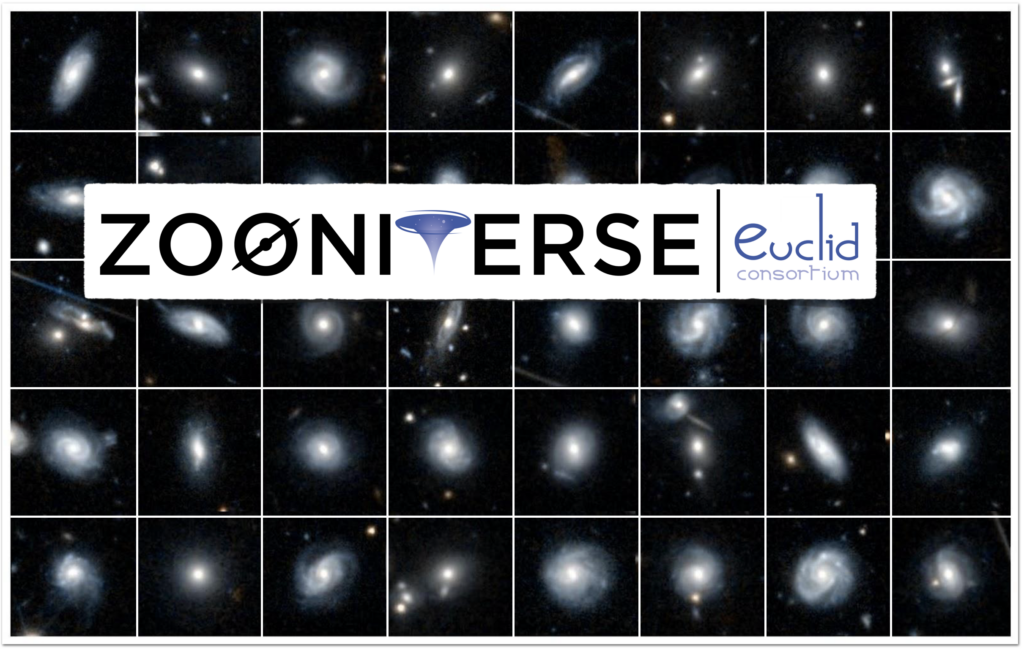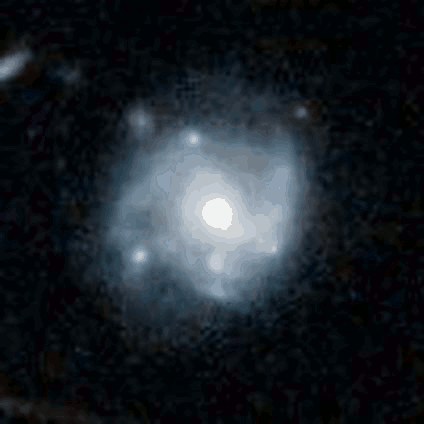Euclid scientists need your help. Euclid captures images of tens of millions of galaxies like those we’re showing here. To classify that impossibly-large pile of galaxies, we’re using citizen-science classifications to train AI algorithms. But the AI algorithms need to be ready for the scientists by the end of August – in only one month! We need as many volunteer classifications for teaching the AI algorithms as we can get; our goal is 100,000 classifications. This is Galaxy Zoo: Euclid. Spread the word and dive in!

Euclid launched in July 2023. As we have written about, the telescope has been designed to survey a much larger region of sky than the Hubble Space Telescope or the JWST, meaning it can capture a wide range of different objects all in the same image – from faint to bright, from distant to nearby, from the most massive of galaxy clusters, to the smallest nearby stars. With Euclid, we will get both a very detailed and very wide view – more than one third of the sky – all at once.
Over the next six years, the spacecraft is expected to send around 100 GB of data back to Earth every day. That’s a lot of data, and investigating galaxies and labelling their properties through human effort alone is incredibly difficult. That’s why ESA and Euclid consortium scientists have partnered with Galaxy Zoo. This is a citizen science project on the Zooniverse platform, where members of the public can help classify the shapes of galaxies.
The Galaxy Zoo project was first launched in 2007, and asked members of the public to help classify the shapes of a million galaxies from images taken by the Sloan Digital Sky Survey. In the past 17 years, Galaxy Zoo has remained operational, with more than 400 000 people classifying the shapes of galaxies from other projects and telescopes, including the Hubble Space Telescope and the JWST.
Galaxy Zoo: Euclid is the first chance for the public to see images from Euclid’s main survey. Euclid captures so many images – we have prepared 820,000 and counting, thanks to the ESA Datalabs digital platform – that almost every image will have never been seen before. You could be the first human to ever see a given galaxy. What will you discover?

A sequence of Euclid-observed galaxies. Classify them! At Galaxy Zoo: Euclid you will find not 60, but many 100,000 galaxies to look at, explore, and label as an input to science.
On the platform, volunteers will be presented with images of galaxies and will then be asked several questions, such as “Is the galaxy round?”, or “Are there signs of spiral arms?”. These classifications are not only useful for their immediate scientific potential, but also as a training set for Artificial Intelligence (AI) or machine learning algorithms. Without being taught what to look for by humans, AI algorithms struggle to classify galaxies. But together, humans and AI can accurately classify limitless numbers of galaxies.
At Zooniverse, the team has developed an AI algorithm called ZooBot, which will sift through the Euclid images first and label the ‘easier ones’ of which a lot of examples already exist in previous galaxy surveys. When ZooBot is not confident on the classification of a galaxy, perhaps due to complex or faint structures, it will show it to users on Galaxy Zoo to get their human classifications, which will then help ZooBot to learn more. After being trained on these human classifications, ZooBot will be integrated in the Euclid catalogues to provide detailed classifications for hundreds of millions of galaxies, making it the largest scientific catalogue to date, and enabling groundbreaking new science.
So now we need your help to label these Euclid galaxies. Our goal is 100,000 labels before the end of August. We’re in a hurry because we still need to train ZooBot to then classify the rest of the galaxies, and those algorithms need to be ready by September to fit in with Euclid’s data processing plan. The more we label, the better the algorithms will be. Join in now at www.galaxyzoo.org.


